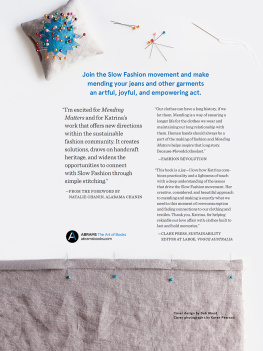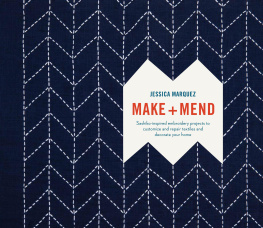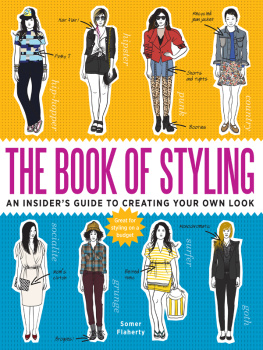Contents
Guide
Page List
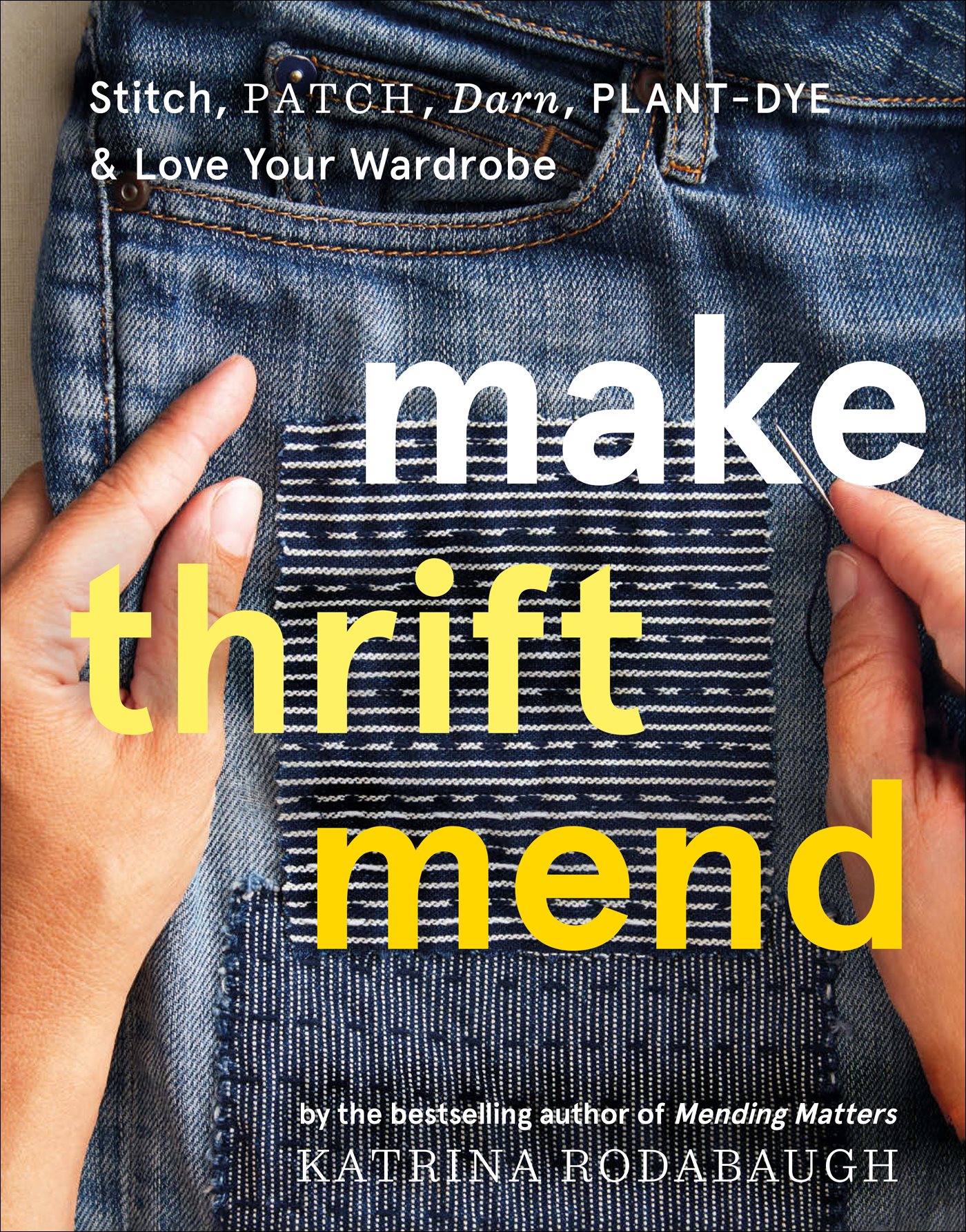




TO CAROL,
MARY & LEONA,
FOR THIS
LINEAGE OF STITCHES.
AND TO DAVID,
MAXWELL & JUDE,
FOR THIS
HOPE FOR THE FUTURE.


It is not enough to weep for our lost landscapes; we have to put our hands in the earth to make ourselves whole again. Even a wounded world is feeding us. Even a wounded world holds us, giving us moments of wonder and joy. I choose joy over despair. Not because I have my head in the sand, but because joy is what the earth gives me daily and I must return the gift.
ROBIN WALL KIMMERER
Braiding Sweetgrass: Indigenous Wisdom,
Scientific Knowledge, and the Teachings of Plants
CONTENTS
CHAPTER 1
build
CHAPTER 2
make
CHAPTER 3
thrift (& dye)
CHAPTER 4
mend

foreword
Katrinas first mending book, Mending Matters, matters to me enormously: It lives between my studio, my bedroom, and my sitting room, depending on whether I want to have a quick dip for a momentary inspiration, or I am looking for something really specific as a working reference. My copy is well thumbed, and full of page markers that I keep going back toand I literally cannot wait to place Make Thrift Mend, the book you are holding in your hands, right next to it.
Lets face it: We all have to do something, because we cant carry on as we have, and our clothes, our wardrobes, are a comforting and impactful place to start; we have been fed overproduction and quantity over quality for so long now that many of us wouldnt know the difference between a good hemline and a shoddy one, a well-constructed garment and a flimsy piece of something to wear for a minute.
Katrina belongs to a category of individuals (and I consider myself to be cut from that same cloth) who love clothes and see their value, both as our chosen skin and as a powerful vehicle for self-expression, celebrating pieces where each tear is a memory of use, and each repair is a statement of intent.
In an industry that has been hell-bent on overproducing well over a hundred billion garments per year, we need to install balance, and that is prosperity over growth and adequacy instead of excessour wardrobes and the clothes we choose to put in them (and how we care for them) have a huge part to play.
Katrinas concept of a fashion fast to antagonize fast fashion, and embarking on a journey that speaks of luxury, artistry, craft, and passion, make her a true pioneer for a fashion system that cherishes its roots and places them firmly at the forefront of our most relevant conversation: how to make fashion responsible and sustainable. And a fashion fast need not be as painful as a strict diet, after all; in fact quite the oppositeit can lead to a burst of creativity, awaken new curiosities, be the start of something new. We are so programmed to think that happiness is the next new, cheap online bargain that we dont bother to imagine that newness could be achieved with a little bit of a rethink of the things we already own.
Katrina provides the inspiration, the motivation, and the techniques to put daydreams into practice, whether you want to DIY it or ask a professional to do it for you, and the more you delve into her universe, the more you are compelled to do as she does.
Orsola de Castro,
co-founder and global creative director, Fashion Revolution

introduction
This book is my hope for the future. Its my hope for the future of fashion, sustainable or conscious living, fiber arts, and the intersection where they create incredible opportunity for change. Its my attempt to share a written version of my personal art project, Make Thrift Mend, expanding my original fashion fast with tutorials, essays, quotes, photographs, and extensive resources. Its a follow-up to my last book, Mending Matters, which resulted from teaching dozens, if not hundreds, of mending workshops across the country and wanting to offer my techniques to folks anywhere books are available.
But in many ways this book, Make Thrift Mend, is about turning back to my instinct as an artist. Its about honoring that impulse to create a personal practice that fused my passion for the environment with my love of fiber arts and fashion. Its that willful spirit of many artists that persists despite the oddsto make art because we must. But in that space of necessary creativity, we shift our habits to consider our impact on the planet. And still make beautiful things.
If Ive learned anything from teaching and working in sustainable fashion, its that the solutions are infinite and individual. Our solutions for living sustainably should include our various budgets, lifestyles, cultures, geographies, aesthetics, technical skills, and more. It shouldnt look the same from person to person. Instead, it should include a myriad of solutions. It should also include the preservation of textile skills and the retention of the ability to simply make things with our hands.
If we are going to create a Slow Fashion future, its not going to look like any fashion trend of the past. It will embrace circularity and invention. Yet it will heed the limits of nonrenewable resources and recognize when weve used enough. Or too much. It will look to upcycle, recycle, and reuse whenever possible. It will be low-waste and zero-waste. It will prioritize fibers that biodegrade, support local fibersheds and farms, and go beyond carbon-neutral to carbon-beneficial. Circularity will become the new normdesigners and makers will conceive of garments with the intention of using the materials again.
It will also consider the people making our garments. It will assume that ethical labor and fair working conditions are a mandateall over the world. It will better utilize technology for design solutions and community-building. It will be committed to diversity, equity, and inclusion. It will consider and celebrate all bodies. It will be collaborative. It will be respectful. It will honor traditional textile techniques and expertise to make garments for todays citizens while paying deep homage to where, when, and how the techniques were developed.
But one thing that will also direct the Slow Fashion future is fierce creativity. Bold invention. Striking innovation. The best art and design are wildly inspired. The shifts will be necessary in policy, law, and among individuals. Collectively, well need to turn open-hearted to the plants, animals, and people of the earth who have been mindfully making garments using sustainable techniques for centuries. They hold the wisdom and the knowledge for the future. Before fast fashion there was another way. For all of us.

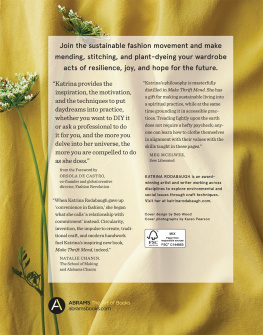
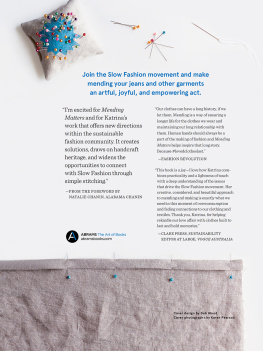

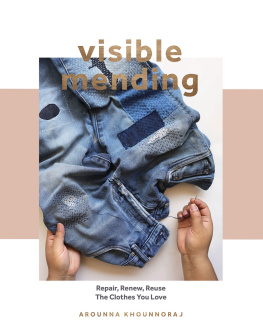
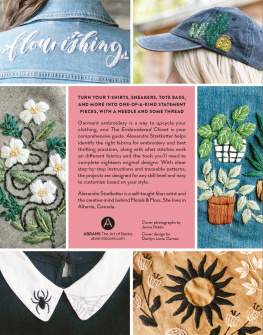
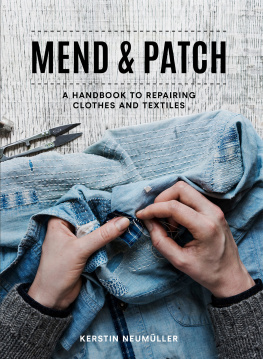
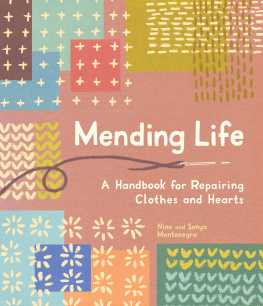
![Noriko Misumi [ミスミノリコ] - Mending with Love: Creative Repairs for Your Favorite Things](/uploads/posts/book/306555/thumbs/noriko-misumi-mending-with.jpg)


